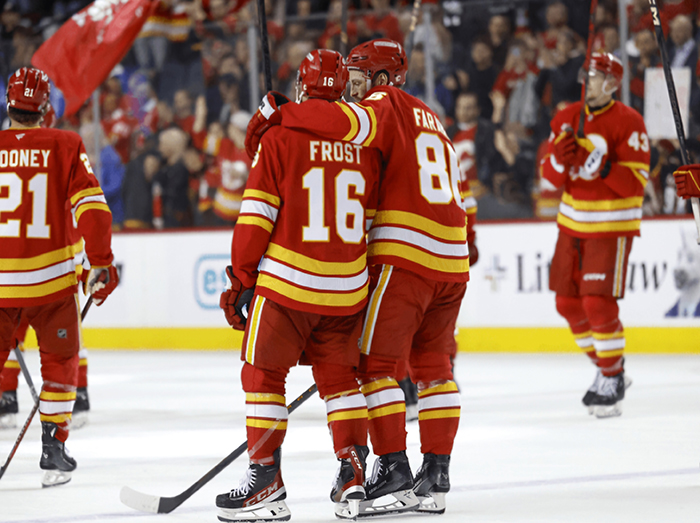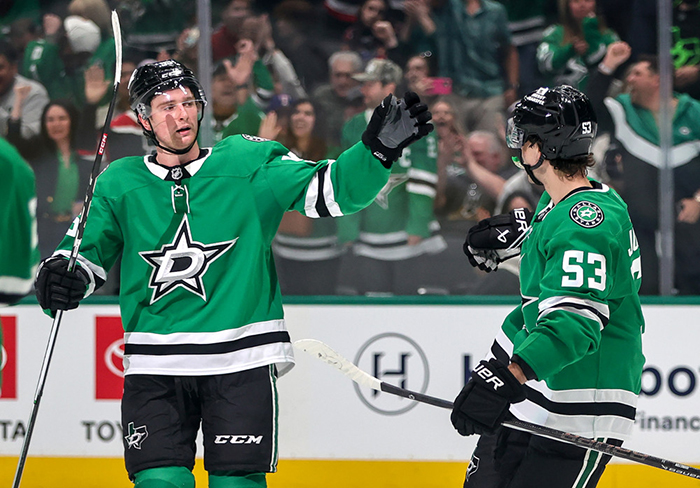The Flyers blog on Hockey Hot Stove is brought to you by Cover All Exteriors, LLC. Come see what the No. 1 roofing and siding contractor in the Delaware Valley can do for the outside of your house. Call (215) 608-4712 for a free inspection.
In Part Three of our series on the systems Rick Tocchet employed with his previous teams, we’ll look at the offensive zone and neutral zone forecheck. Previously, in Part One, we discussed the Box+1 defensive zone coverage system. Part Two looks at breakouts in transition from defense to offense.
The systems Tocchet and his staff install with the Philadelphia Flyers may not be identical to what he used in Vancouver and Arizona. However, expect a lot of similarities, especially in terms of the high degree of 200-foot responsibility that centers carry on Tocchet-coached teams.
Offensive zone forecheck: Puck support is crucial
There’s nothing revolutionary or unusual about the forecheck Tocchet used in Arizona or Vancouver. Likewise, fans can expect the Flyers offensive zone and neutral zone forechecks to have a familiar look. The keys to success:
- Carry-in vs. dump-in decisions: Tocchet preaches the same decision-making philosophy that former Flyers interim head coach Scott Gordon explained this way. If there’s ice in front of you, make a play with the puck. If the ice is behind the D, put the puck in deep and get in quickly to forecheck.
- Skate hard and follow through: Flyers players will hear this nonstop. It’s nothing they haven’t heard throughout their careers, however. Play hard with speed, support the puck, avoid low-percentage risks and do not overstay shifts. Stay in position and compete hard for the puck. Tocchet doesn’t have many non-negotiable expectations. However, repeatedly ignoring these particular expectations will get someone benched
When the opposition has the puck and is trying to break out, Tocchet teams generally employ the 1-2-2 forecheck both in the offensive zone and neutral zone. The fundamental principle: The first forward in (the F1) pressures the puck carrier and challenges/eliminates the D-to-D pass. The second forechecking forward (F2 ) takes away the half wall pass to the half-wall. The F3 takes away the player swinging through the middle.
The example below looks at Pittsburgh’s Evgeni Malkin as the F1. He gets in quickly to pressure the defense. The F2 cuts off the half wall. Forced to defend, the New York Islanders get hemmed in their own zone.
The same basic concept is at work again in Example 2. Here, there’s a freeze frame and the Vegas Golden Knights forecheckers are numbered as the F1, F2, and F3. Again, the forechecking team cuts off any chance for the defending team to get the puck out. Vegas takes over possession and gets the puck to the net.
Note: A 1-2-2 can transform into a 2-1-1 if the opportunity presents itself. How does this happen? The forechecking team gets into the attack zone with speed. The F1 creates a 50-50 battle for the puck. The F2 can then come in to provide support. This can backfire if the F3 does not stay in position (higher in the attack zone between the dot and the top of circle). The F3 should not go in deep, too.
What happens if all three forwards are caught in deep? Too frequently, it means an odd-man rush for the opposition.
Neutral zone forecheck: The 1-2-2 in effect
Everywhere he’s coached — Tampa, Arizona and Vancouver — Tocchet teams use the meat-and-potatoes 1-2-2.
The forwards: The F1 divides the ice. Through his positioning and active defensive stick, he forces the puck carrier to make a split-second decision and force a bad play up the ice. Meanwhile, the F2 in the neutral zone takes the opposing winger on the wall. If the puck comes to that player, it’s the F2’s job to separate him from the puck (or at least tie him up and create a battle for the F1 to swing over in support).
However, if the opposing side manages to get the puck to its forward swinging through the the middle, it becomes the F3’s job to separate his man from the puck or, at least, force a dump in with insufficient speed to get in on their own forecheck.
The defensemen: The strong-side defenseman in the 1-2-2 neutral zone forecheck is responsible to insure his side does not easily yield the blueline. If he can’t force a possession change, at least prevent the opponent from making a play. Meanwhile, the weak-side defenseman is usually the one who retrieves the puck if the opponent dumps it in. However, if the other side attempts a cross-ice pass in the neutral zone, the weak-side D has to be ready to shift over to challenge.
Here’s an example of a neutral zone 1-2-2 with a change of possession at the blueline.
Easy concepts but hard work
Tocchet and his staff will not need to spend much time going over the Xs and Os of his offensive zone and neutral zone forecheck systems. Flyers players have seen all this before at various levels of hockey straight up to the NHL. However, while the ideas themselves are simple, it takes everyone to skate hard and support one another to work effectively.
There’s a lot of sweat that goes into executing the forecheck successfully. It can take second-effort and third-effort pressure to get the desired outcome. Conditioning and strong work ethic are absolute musts on a Tocchet team.




Selfish question: Will Bill Clement stay in the area beyond the fantasy camp? Say, until, and for, the Philly Show in September? Can people watch any of the fantasy camp? And which day is, shall we say, the most relaxed? I am working on a Cup teams item. Thanks.
Bill will return to NC after Fantasy Camp but he comes back to Philadelphia periodically. In terms this weekend, the daily sessions at Fantasy Camp (Class of 1923 Rink at Penn) are free and open to the public. Saturday is probably the best day to come before/after the team Bill is coaching has its practice session.
Thanks, Bill. I really appreciate it. Do you happen to know when the camp opens on Saturday? I would be coming from CT if I decide to go. And are you covering it?
The memories will be thick, as I went to at least a dozen practices my freshmen year and the team’s last year there, 82-83.
I believe the first group goes out for practice at 10 AM but it could be 9. I will check the order and the ice time schedule and post it to a blog.
OK, I saw the schedule. The team that Bill Clement and Mark Recchi are coaching — Team PSS — will be practicing from 9 AM to 9:45 AM on Saturday. The best time to catch Bill is either before of after practice. They have a 1 PM game.
Thank you!